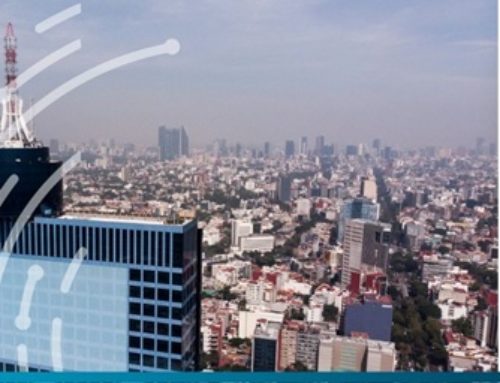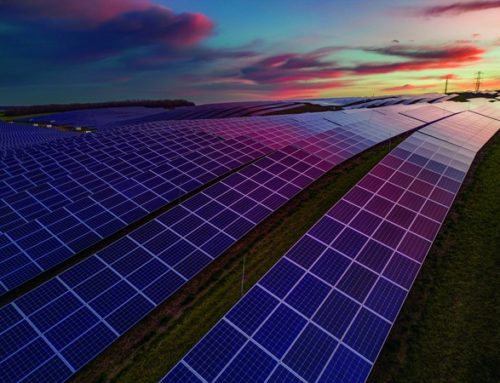1. The Korean Tech Wave: Record-Breaking Foreign Investment in 2023
South Korea, a nation known for its technological prowess, has drawn a record amount of foreign direct investment (FDI) in 2023. This surge in investment is a testament to the growing confidence in South Korea’s technology sector, which has become more deeply embedded in global supply chains since the pandemic.
In 2023, about $18.8 billion of funds flowed into South Korea, marking a 3.4% increase from the previous year. The electronics sector accounted for $3 billion of the total investment. This sector is underpinned by two major pillars: semiconductors and rechargeable batteries.
Despite a slump in semiconductor and smartphone exports for most of last year, investors around the world remained confident in the long-term prospects for South Korea’s technology industries. Semiconductors regained strength late last year, with the industry shipping 21.8% more from a year earlier in December.
South Korea is home to two of the world’s biggest memory-chip manufacturers, Samsung Electronics Co. and SK Hynix Inc. The government is leading an initiative to create a semiconductor cluster south of the capital following a boom in demand during the pandemic.
The nation’s rechargeable batteries, used for electric vehicles (EVs), are another significant contributor to the electronics industry. Despite a 1% slide in exports last month, South Korean companies held about 23.4% of the global EV battery market as of October.
Pledges for FDI in South Korea also reached a record $32.7 billion last year, a 7.5% rise from a year earlier. This indicates that the growth in funding from abroad is likely to continue, further bolstering South Korea’s position as a global tech powerhouse.
In conclusion, South Korea’s record-breaking foreign investment is a clear sign of the nation’s robust tech prospects. As the world continues to grapple with the pandemic, South Korea’s technology sector stands as a beacon of resilience and innovation.
2. Cambodia’s Economic Leap: 268 new projects and 307,000 new jobs

Michiel Verledens Pexels
In the face of global economic challenges, Cambodia has emerged as a beacon of resilience and growth. In 2023, the Southeast Asian nation attracted a remarkable 268 new Foreign Direct Investments (FDIs), leading to the creation of over 307,000 jobs. This impressive feat underscores Cambodia’s robust economic potential and its increasing attractiveness as an investment destination.
The Council for the Development of Cambodia (CDC) reported that the country attracted fixed-asset investment of $4.92 billion in 2023, marking a 22% increase from the previous year. These investments spanned across various sectors, including industries, infrastructure, agriculture and agro-industry, and tourism.
This surge in FDIs is a testament to Cambodia’s stable political and economic climate, foreigner-friendly investment framework, and the nation’s commitment to growth and development. As the global economy continues to recover from the COVID-19 pandemic, Cambodia’s success story offers a promising outlook for the future.
What are the key industries in Cambodia?
Apart from attracting foreign direct investments, Cambodia’s economy is supported by several other key industries:
- Textiles and Garments: This is one of the largest industries in Cambodia, with several successful garment factories operating in the country.
- Tourism: Cambodia’s rich cultural heritage and natural beauty make tourism a significant part of its economy.
- Agriculture: A largely rural nation, Cambodia relies heavily on agriculture. Rice is one of the most important crops, along with a variety of local fruits and vegetables.
- Fishing: The fishing industry plays an important role in sustaining the nation’s economy.
- Construction and Real Estate: The construction sector has seen significant growth, contributing to the country’s economic development.
- Mining and Exploration: This is an emerging industry in Cambodia, with potential for future growth.
These industries, along with the influx of foreign direct investments, contribute to Cambodia’s economic resilience and growth.
How does the Cambodian Government support growth?
The Cambodian government has implemented several strategies and policies to support economic growth:
- Economic Policy and Structural Reform Program: After the first general election in 1993, the government implemented a comprehensive micro- and macroeconomic policy and structural reform program to integrate Cambodia’s economy into the region and the world, stimulating its economic growth.
- National Economic Plans and Socioeconomic Goals: Cambodia’s economic direction has been steered by a series of national economic plans and socioeconomic goals, including the First Five-Year Program of Socioeconomic Restoration and Development (1986–1990), the National Program to Rehabilitate and Develop Cambodia (1994), and the National Strategic Development Plans (NSDPs) since 2004.
- Rectangular Strategy for Growth, Employment, Equity, and Efficiency: The Rectangular Strategy, periodically updated, has been adopted by the government as a guiding framework. It represents the economic policy agenda of the Royal Government of Cambodia (RGC) that was formulated as part of a comprehensive, consistent, interlinked, and mutually reinforcing system.
- Cambodia Growth and Resilience Development Policy Operation: In December 2022, the World Bank approved a $274 million credit for this operation. The financing will support reforms that will boost growth and strengthen Cambodia’s resilience.
- Post-pandemic Economic Recovery Plan: The government’s post-pandemic Economic Recovery Plan has three broad objectives: recovery, reform, and resilience.
These strategies and policies have played a significant role in supporting Cambodia’s economic growth and attracting foreign direct investments.
3. First UK Trade Mission to Kyev: A milestone in defence cooperation

Tetiana Shevereva Unsplash
In a significant development, the UK Government and UK defence industry conducted their first trade mission to Ukraine, marking a new chapter in defence cooperation between the two nations. This mission, led by the Department for Business and Trade and Ministry of Defence, took place on 13-14 December 2023.
The mission built on the UK’s sustained and continuous support to Ukraine’s defence since Putin’s invasion in 2014. It followed discussions at the Defence and Security Equipment International (DSEI) exhibition in London in September regarding potential partnerships between UK and Ukraine defence and security companies.
The trade mission brought together UK and Ukrainian government officials with key stakeholders from UK and Ukrainian industry to discuss opportunities for long-term cooperation. As a result, several agreements were signed, enhancing resilient defence industrial facilities inside Ukraine.
This mission not only strengthens Ukraine’s defences but also boosts UK-Ukraine trade links, with annual UK-Ukraine goods and services trade amounting to £1.5 billion. It represents a significant stride in bolstering defence ties and fostering economic growth for both nations.
Other areas of cooperation
- Trade: Trade is a key area of cooperation, with the UK government increasing the amount of support available through UK Export Finance to support projects in Ukraine to £3.5 billion.
- Reforms to Support Trade: Ukraine, with UK support, is committed to implementing comprehensive internal reforms, which will build resilience, attract foreign investment, and strengthen prosperity.
- Climate Change and Energy Security: The two countries are working together to address climate change and enhance energy security.
- Defence and Security: The UK has been a steadfast supporter of Ukraine’s sovereignty and territorial integrity, and the two countries have strong defence and security ties.
- Conflict and Stabilisation: The UK commends Ukraine’s restraint in the face of ongoing Russian aggression and supports Ukraine as an independent state.
- Culture and People-to-People Links: The UK and Ukraine also have strong cultural ties and people-to-people links.
4. Three Pivotal Elections Set to Reshape Global Politics in 2024

Anthony Rosset Unsplash
The year 2024 is poised to be a landmark year in global politics, with three major elections set to potentially reshape the geopolitical landscape. These elections, taking place in the United States, the United Kingdom, and India, represent a significant portion of the world’s population and an outsized chunk of global GDP.
In the United States, the presidential election will be a critical test for the nation’s democracy. The UK General Election, potentially taking place in May, will be a key determinant of the country’s post-Brexit trajectory. Meanwhile, India, the world’s most populous democracy, will hold a general election that could have far-reaching implications for the region.
These elections come at a time when the world is grappling with numerous challenges, from the ongoing effects of the COVID-19 pandemic to the urgent need to address climate change. The outcomes of these elections could significantly influence how these issues are tackled on a global scale.
This article will delve into the potential impacts of these three pivotal elections and explore how they could change the face of global politics in 2024.
Impact
- United States: The 2024 US Presidential election could have significant implications for both domestic and international politics. The outcome could influence the country’s stance on key issues such as climate change, healthcare, and economic policy. If an independent candidate gains steam, it could disrupt the traditional two-party system. Moreover, the health of the candidates could also be a factor, given their ages. The election’s outcome could also affect US relations with other countries, including its stance towards Taiwan and its influence on the UK’s election timing.
- United Kingdom: The UK General Election in 2024 will be a key determinant of the country’s post-Brexit trajectory. The election could influence the UK’s economic prospects, and the timing of the election could be influenced by international factors such as the US election. The election’s outcome could also affect the UK’s stance on key issues such as climate change, healthcare, and economic policy.
- India: The 2024 General Election in India could have far-reaching implications for the region. The outcome could influence India’s economic growth, inflation, and international market economy. The election could also shape the political landscape in India, with the potential emergence of new coalitions. The state elections in 2024 could also shape India’s mood for the general election.
In conclusion, these three pivotal elections could significantly reshape global politics in 2024. They could influence the stance of these countries on key issues, affect their relations with other countries, and potentially disrupt traditional political systems.
5. TotalEnergies’ Solar Leap: Building a 216MW Solar Plant in South Africa
Pixel Perfektion Unsplash
In a significant stride towards a sustainable future, TotalEnergies, along with its partners Hydra Storage Holding and Reatile Renewables, has announced the construction of a major hybrid renewables project in South Africa. This project comprises a 216 MW solar plant and a 500 MWh battery storage system, designed to manage the intermittency of solar production.
Located in the Northern Cape province, the site will supply dispatchable renewable electricity to the South African national grid for twenty years, equivalent to over 400 GWh per year. Thanks to the storage system, the project will supply 75 MW of dispatchable power to the national utility Eskom on a continuous basis from 5 a.m. to 9.30 p.m., i.e., for longer than the available sunshine.
This project is expected to be operational in 2025 and is part of the Risk Mitigation Independent Power Producer Procurement Programme launched by the Department of Mineral Resources and Energy to develop electricity generation capacity and alleviate the country’s electricity supply constraints.
This article will delve into the details of this ambitious project and explore how it could contribute to South Africa’s energy transition and strengthen the resilience of its power system.
Key details
The TotalEnergies’ solar plant project in South Africa has several key details:
- Project Components: The project comprises a 216 MW solar plant and a 500 MWh battery storage system to manage the intermittency of solar production.
- Location: The project is located in the Northern Cape province.
- Power Supply: The site will supply dispatchable renewable electricity to the South African national grid for twenty years, equivalent to over 400 GWh per year.
- Power Purchase Agreement: Under the terms of a Power Purchase Agreement signed in November, and thanks to the storage system, the project will supply 75 MW of dispatchable power to the national utility Eskom on a continuous basis from 5 a.m. to 9.30 p.m., i.e., for longer than the available sunshine.
- Consortium: The project is being developed by a consortium of TotalEnergies (35%), Hydra Storage Holding 1 (35%) and a B-BBEE 2 partner, Reatile Renewables (30%).
- Operational Date: The project has achieved financial close on 14 December and is expected to be operational in 2025.
- Programme: The project is part of the Risk Mitigation Independent Power Producer Procurement Programme launched by the Department of Mineral Resources and Energy to develop electricity generation capacity and alleviate the country’s electricity supply constraints.
The TotalEnergies’ solar plant project in South Africa could significantly contribute to the country’s energy transition and strengthen the resilience of its power system in several ways.
- Energy Transition: The project will supply dispatchable renewable electricity to the South African national grid for twenty years, equivalent to over 400 GWh per year². This will help South Africa transition from a coal-based energy system to a more sustainable, renewable energy-based system.
- Power System Resilience: Thanks to its innovative hybrid design, the project will enable the supply of continuous green electricity over a longer period and beyond the hours of sunshine. This will help strengthen the resilience of South Africa’s power system, ensuring a more reliable and stable energy supply.
- Economic Impact: The project will have a direct impact on the local community through job creations¹. This will contribute to economic growth and development in the region.
- Decarbonisation: The project will provide competitive and available renewable electricity to decarbonise Sasol and Air Liquide’s production. This will contribute to South Africa’s efforts to reduce its carbon emissions and combat climate change.
In conclusion, the TotalEnergies’ solar plant project is a significant step towards a sustainable future for South Africa. It not only contributes to the country’s energy transition but also strengthens the resilience of its power system.
6. LG Chem’s $820 Million Leap into US Battery Cathode Production

Tanner Boriack Unsplash
In a significant move towards bolstering the electric vehicle (EV) industry, South Korea’s LG Chem Ltd has announced an investment of $820 million to build a battery cathode material factory in the U.S. state of Tennessee. This investment is part of LG Chem’s broader plan to invest more than $3 billion through 2027 in the project.
The factory, set to be the largest EV battery cathode manufacturing facility in the US, will produce 120,000 tons of cathode material annually by 2027. This is expected to be enough for 1.2 million electric cars per year. The construction is planned to start as early as the first quarter of 2023, with mass production commencing in the second half of 2025.
This article will delve into the details of this ambitious project and explore how it could contribute to the growth of the EV industry and the transition towards sustainable energy.
Key details
The LG Chem’s battery cathode plant project in the U.S. has several key details:
- Investment: LG Chem will invest $820 million to build a battery cathode material plant in the U.S. state of Tennessee. This investment is part of LG Chem’s broader plan to invest more than $3 billion through 2027 in the project.
- Production Capacity: The factory will produce 120,000 tons of cathode material annually by 2027. This is expected to be enough for 1.2 million electric cars per year.
- Construction and Operation Timeline: The construction is planned to start as early as the first quarter of 2023², with mass production commencing in the second half of 2025.
- Location: The plant will be located in the U.S. state of Tennessee.
- Market Capitalisation: LG Chem has a market capitalisation of $34.8 trillion.
This project represents a significant step towards bolstering the electric vehicle (EV) industry.
The LG Chem’s battery cathode plant project in the U.S. could significantly contribute to the growth of the electric vehicle (EV) industry and the transition towards sustainable energy in several ways.
- Boosting EV Production: The factory will produce 120,000 tons of cathode material annually by 2027. This is expected to be enough for 1.2 million electric cars per year, thereby supporting the growth of the EV industry.
- Advancing Battery Technology: The plant will produce advanced NCMA – nickel, cobalt, manganese, aluminum – cathode materials for next-gen EV batteries with improved battery capacity and stability. This could lead to the production of more efficient and longer-lasting batteries, further promoting the adoption of EVs.
- Promoting Sustainable Energy: LG Chem plans to operate the Tennessee plant with 100 percent renewable energy, including solar and hydropower, in collaboration with local power supply companies. This aligns with the global shift towards sustainable energy and reduces the environmental impact of battery production.
- Strengthening the Supply Chain: The Tennessee site will function as a supply chain hub, where material and recycling partners work together to supply global customers such as Tesla and GM. This could enhance the efficiency and sustainability of the EV supply chain.
In conclusion, the LG Chem’s battery cathode plant project represents a significant step towards bolstering the EV industry and promoting the transition towards sustainable energy.
7. Green Hydrogen: A Catalyst for Namibia’s Economic Transformation

Arne Smith Unsplash
In the global race towards sustainable energy, Namibia has emerged as a front-runner with its strategic focus on green hydrogen. The country’s commitment to this clean energy source is not only a testament to its environmental stewardship but also a key driver of its economic development.
In November 2022, Namibia launched a Green Hydrogen Council and a green hydrogen strategy, reinforcing its commitment to the Paris Agreement on climate change. This move aims to reduce emissions to net zero by 2050. Moreover, Namibia secured €540 million in climate finance from the Dutch government and the European Investment at COP27, which will facilitate and accelerate the development of a green hydrogen sector and economy in Namibia.
This article will delve into the details of how green hydrogen has benefited the Namibian economy, from attracting meaningful foreign direct investment and creating well-paying jobs, to diversifying its export basket and improving its terms of trade.
Key details
The green hydrogen project in Namibia has several key details:
- Vision: Namibia aims to become a green hydrogen superpower in the coming decade by positioning itself as a leader in the emerging markets and an international exporter of green hydrogen.
- Strategy: Namibia’s Green Hydrogen Council launched its green hydrogen strategy at COP27, which supports the country’s commitment to the Paris Agreement on climate change, with the ultimate goal of reducing emissions to net zero by 2050.
- Production Capacity: The new Namibian green hydrogen strategy targets a production of 10-12 million tonnes per annum hydrogen equivalent by 2050.
- Project: The project is based in an area of ~4,000 km 2 of land within the Tsau Khaeb National Park, near the coastal town of Luderitz and will ultimately produce around 300,000 tonnes of green hydrogen per year.
- Investment: The project is worth a combined total of roughly $9.4 billion once fully developed.
- Partnerships: Namibia has entered into memoranda of understanding (MoUs) with Germany, the Netherlands and the EU for the export of green hydrogen.
- Economic Impact: The development of the green hydrogen market is critical to upskill the domestic workforce and maximise local employment.
These details highlight the significant potential of green hydrogen in Namibia and its role in the country’s energy transition.
Featured image Sava Bobov via Unsplash







